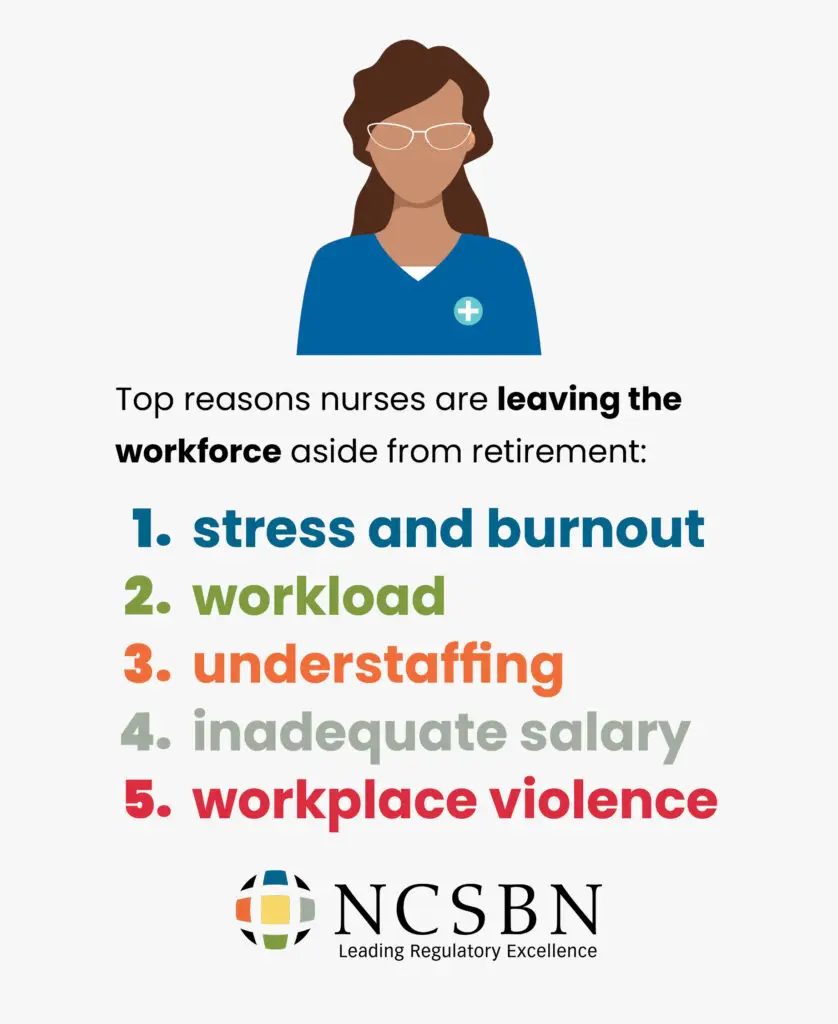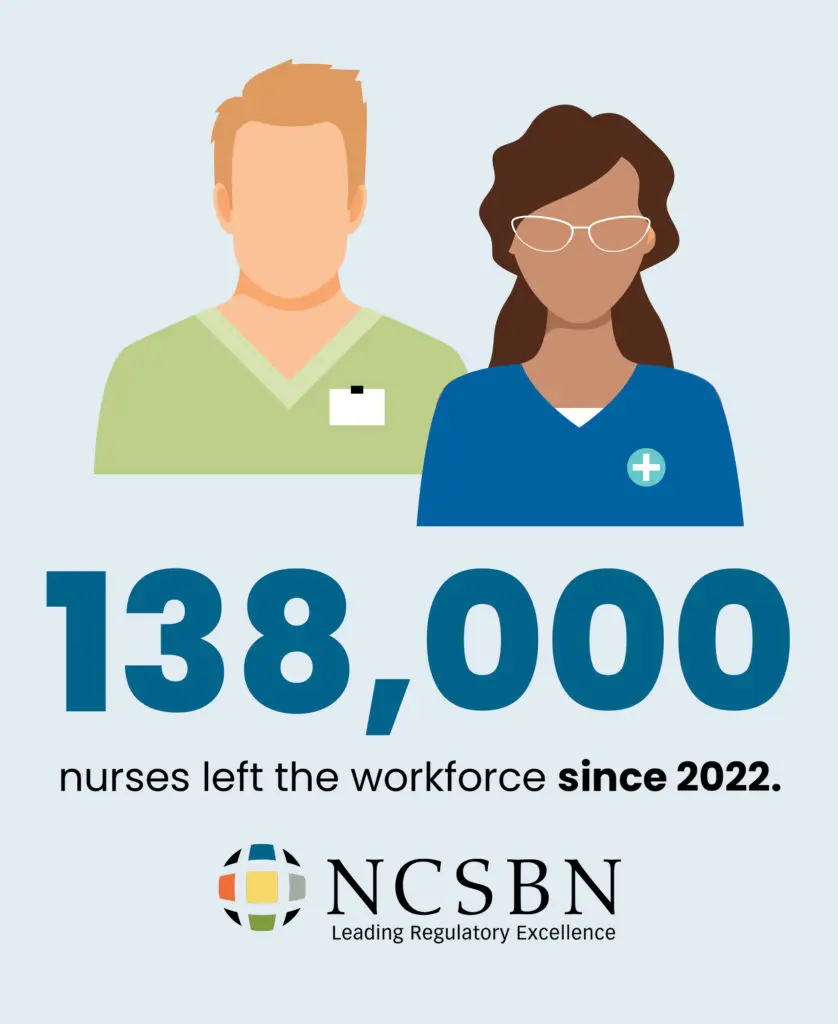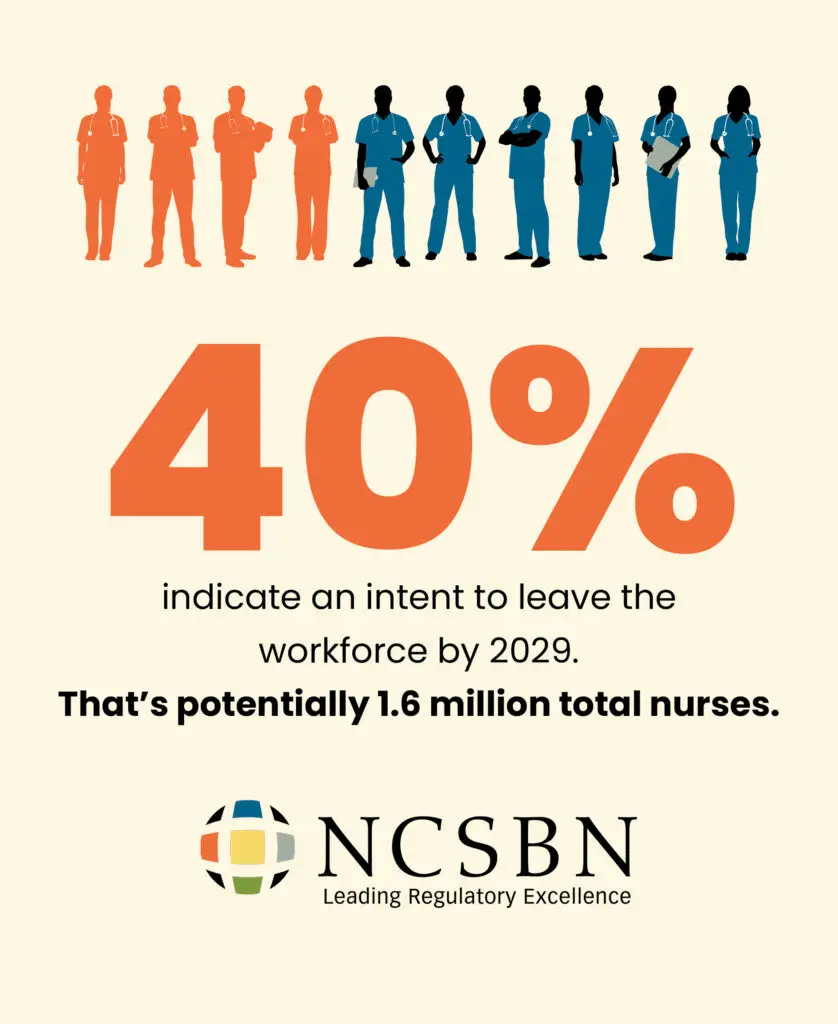The healthcare landscape is facing an unprecedented challenge: a significant shortage of nursing staff coupled with widespread burnout among existing nurses. According to a comprehensive survey conducted by the National Council of State Boards of Nursing (NCSBN), which reached out to 800,000 nurses across the United States, the root causes of these shortages are multifaceted and deeply intertwined with the evolving demands of the healthcare system. In this detailed exploration, we delve into the factors contributing to the nursing crisis, the repercussions on patient care and the healthcare system at large, and the insights provided by NCSBN staff aimed at mitigating this pressing issue.
Understanding the Scope of the Nursing Crisis
The survey conducted by NCSBN serves as a critical lens through which we can examine the current state of nursing in the United States. With a staggering 800,000 nurses participating, the data offers invaluable insights into the professional lives of nurses, highlighting the challenges they face and the impact of these challenges on the broader healthcare system.
Key Findings from the NCSBN Survey
- High Levels of Burnout: A significant percentage of nurses report feelings of exhaustion, depersonalization, and a reduced sense of personal accomplishment.
- Increased Turnover Rates: Many nurses are leaving the profession within the first few years of their careers, citing job dissatisfaction and burnout as primary reasons.
- Workplace Stressors: Long hours, understaffed units, and high patient-to-nurse ratios contribute to an environment where burnout is almost inevitable.
- Impact of the COVID-19 Pandemic: The pandemic exacerbated existing issues, placing unprecedented stress on nursing staff and highlighting systemic vulnerabilities.
These findings paint a grim picture of the current nursing landscape, emphasizing the urgent need for effective strategies to address staff shortages and mitigate burnout.
Root Causes of Nursing Shortages
Understanding the underlying reasons for the nursing shortage is pivotal in developing targeted solutions. The NCSBN staff have identified several key factors contributing to this crisis:
1. Burnout and Mental Health Challenges
The demanding nature of nursing, combined with emotionally taxing patient interactions, has led to high levels of burnout. Nurses often work long shifts, sometimes exceeding 12 hours, which can lead to physical exhaustion and mental fatigue. The emotional toll of patient care, especially during crises like the COVID-19 pandemic, further exacerbates these feelings.
2. Inadequate Staffing and High Patient Loads
Many healthcare facilities operate with staffing levels that are insufficient to meet patient needs. High patient-to-nurse ratios not only compromise the quality of care but also increase the workload on individual nurses, making it difficult for them to maintain a healthy work-life balance.
3. Limited Opportunities for Career Advancement
A lack of clear career progression pathways can lead to job dissatisfaction. Nurses who feel stagnant in their roles are more likely to leave the profession in search of better opportunities that offer growth and development.
4. Educational Bottlenecks
The demand for nurses has outpaced the capacity of nursing schools to produce new graduates. Limited enrollment capacities, faculty shortages, and high tuition costs are barriers that prevent many aspiring nurses from entering the field.
5. Compensation and Benefits
Competitive salaries and comprehensive benefits are crucial in attracting and retaining nursing staff. Inadequate compensation packages make it challenging for healthcare facilities to compete for top talent, leading to higher turnover rates.
6. Workplace Environment and Support
A positive and supportive workplace environment is essential for nurse retention. Issues such as lack of managerial support, inadequate resources, and poor workplace culture can drive nurses away from their positions.
Consequences of Nursing Shortages and Burnout
The implications of nursing shortages extend beyond the immediate well-being of nurses, affecting patient care and the overall efficiency of the healthcare system.
1. Compromised Patient Care
When nursing staff are stretched thin, the quality of patient care inevitably suffers. Increased workloads can lead to delays in treatment, medication errors, and decreased patient satisfaction. Patients may experience longer wait times and receive less personalized care, which can impact their overall health outcomes.
2. Increased Healthcare Costs
Staff shortages can lead to higher operational costs for healthcare facilities. Emergency hiring to fill vacant positions often comes at a premium, and the increased likelihood of errors can result in costly malpractice suits. Additionally, frequent turnover necessitates ongoing recruitment and training expenses.
3. Stress on Remaining Staff
As nurses leave the profession, those who remain are burdened with additional responsibilities. This increased workload can further escalate stress levels, creating a vicious cycle of burnout and attrition.
4. Impact on Morale and Job Satisfaction
A persistent nursing shortage can erode morale among the existing staff. Feelings of being undervalued and overworked can lead to decreased job satisfaction, further accelerating the turnover rate.
5. Strain on Healthcare Systems
At a systemic level, nursing shortages can strain healthcare infrastructures, leading to overcrowded facilities, diminished resources, and challenges in meeting public health demands, especially during times of crisis.




Insights and Solutions from NCSBN Staff
Recognizing the gravity of the nursing crisis, NCSBN staff have proposed several strategies aimed at alleviating staff shortages and reducing burnout among nurses.1. Enhancing Support Systems
Implementing robust support systems within healthcare facilities can significantly reduce burnout. This includes providing access to mental health resources, offering flexible scheduling options, and fostering a culture of open communication where nurses feel heard and valued.2. Improving Compensation and Benefits
Competitive salaries, comprehensive benefits packages, and performance-based incentives are essential in attracting and retaining nursing talent. Healthcare organizations should regularly review and adjust compensation structures to remain competitive within the industry.3. Expanding Educational Capacity
Investing in nursing education by increasing the capacity of nursing schools, providing scholarships, and offering loan forgiveness programs can help bridge the gap between the demand for and supply of qualified nurses.4. Promoting Career Development
Creating clear career progression pathways and providing opportunities for professional development can enhance job satisfaction. Mentorship programs, continuing education, and leadership training can empower nurses to advance within their careers.5. Implementing Staffing Models that Prioritize Nurse Well-Being
Adopting staffing models that prioritize manageable nurse-to-patient ratios can alleviate the pressure on staff. Ensuring adequate staffing levels allows nurses to provide high-quality care without the constant stress of being overwhelmed.6. Leveraging Technology and Automation
Integrating technology solutions, such as electronic health records and automated scheduling systems, can streamline administrative tasks, allowing nurses to focus more on patient care rather than paperwork.7. Fostering a Positive Workplace Culture
A supportive and inclusive workplace culture can enhance nurse retention. Recognizing and rewarding the hard work of nursing staff, promoting teamwork, and addressing workplace conflicts promptly are key components of a positive work environment.The Role of Policy and Leadership
Addressing the nursing crisis requires concerted efforts at both the organizational and policy levels. Leadership within healthcare institutions must prioritize nurse well-being and advocate for policies that support the nursing workforce.
1. Advocating for Legislative Support
Healthcare leaders can work with policymakers to advocate for legislation that supports nursing education, improves working conditions, and ensures fair compensation for nurses. Policies that address burnout, such as mandatory rest periods and limits on overtime, can also play a crucial role.
2. Investing in Workforce Planning
Proactive workforce planning involves forecasting future nursing needs and developing strategies to meet those demands. This includes collaborating with educational institutions to align curricula with industry needs and implementing retention programs to keep experienced nurses within the system.
3. Enhancing Public Awareness
Raising public awareness about the challenges faced by nurses can garner support for initiatives aimed at improving the profession. Public campaigns can highlight the importance of nurses in the healthcare system and the need for societal support.
Case Studies: Successful Interventions
Several healthcare institutions have implemented innovative strategies to combat nursing shortages and reduce burnout, serving as models for others to emulate.
1. Comprehensive Wellness Programs
A leading hospital in California introduced a comprehensive wellness program that includes mental health support, fitness memberships, and stress management workshops. As a result, employee satisfaction scores improved, and turnover rates decreased by 15% within the first year.
2. Flexible Scheduling Models
A hospital in Texas adopted a flexible scheduling model that allows nurses to have more control over their shifts. This flexibility led to increased job satisfaction and a 20% reduction in burnout rates among staff.
3. Enhanced Educational Partnerships
A network of hospitals partnered with local universities to expand their nursing programs, providing scholarships and guaranteed employment upon graduation. This initiative not only increased the number of new graduates but also ensured a steady pipeline of qualified nurses into the healthcare profession.
The Path Forward: Collaborative Efforts for Sustainable Change
Addressing the nursing crisis requires a multifaceted approach that involves collaboration between healthcare providers, educational institutions, policymakers, and the community. Sustainable change is achievable through the collective implementation of strategies aimed at improving the work environment, enhancing nurse education, and ensuring fair compensation.
1. Strengthening Partnerships
Building strong partnerships between hospitals and nursing schools can facilitate the seamless transition of new graduates into the workforce. Collaborative initiatives can include internship programs, joint research projects, and shared resources aimed at boosting nurse training and retention.
2. Emphasizing Retention Over Recruitment
While recruiting new nurses is essential, retaining existing staff is equally important. Organizations should focus on creating an environment where nurses feel valued, supported, and motivated to continue their careers within the institution.
3. Leveraging Data for Informed Decision-Making
Utilizing data from surveys like those conducted by NCSBN can help healthcare organizations identify specific areas of concern and measure the effectiveness of interventions. Data-driven approaches ensure that strategies are tailored to meet the unique needs of the nursing workforce.
4. Promoting Work-Life Balance
Encouraging a healthy work-life balance through policies such as flexible scheduling, adequate time off, and support for personal commitments can enhance job satisfaction and reduce burnout.
5. Fostering Inclusive Leadership
Inclusive leadership that values diversity and promotes equity within the workplace can create a more harmonious and supportive environment. Leaders who listen to and address the concerns of their nursing staff can drive meaningful change and foster loyalty.
Call to Action
The nursing crisis is a complex issue that demands immediate and sustained action. Healthcare organizations, policymakers, and communities must come together to support nurses, ensuring that they have the resources, support, and opportunities needed to thrive in their vital roles.
If you’re a healthcare provider seeking strategies to address nursing shortages and reduce burnout within your organization, contact NCSBN today. Their team of experts is dedicated to providing tailored solutions that foster a healthy and sustainable nursing workforce, ultimately enhancing the quality of patient care.
Conclusion
The findings of the NCSBN survey underscore the urgent need to address the nursing shortages and burnout that are plaguing the healthcare system. By understanding the root causes, acknowledging the consequences, and implementing comprehensive strategies, we can work towards a future where nurses are supported, valued, and empowered to provide the highest quality of care. Collaborative efforts and a commitment to sustainable change are essential in overcoming the nursing crisis and ensuring the resilience of our healthcare system.
Listen on Podcast
Did you like your experience?
Please leave us a Testimonial HERE if you have a Google account.
Your word helps get our word out to more people.
Thank you in advance!!



